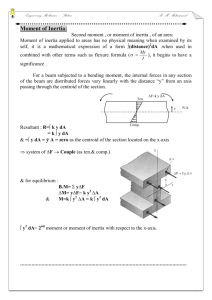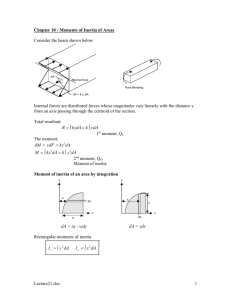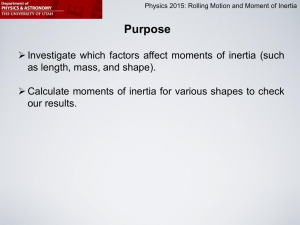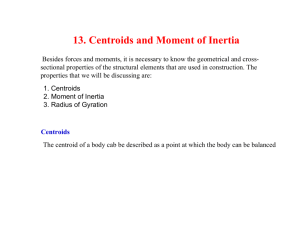Engineering Mechanics: Statics
advertisement
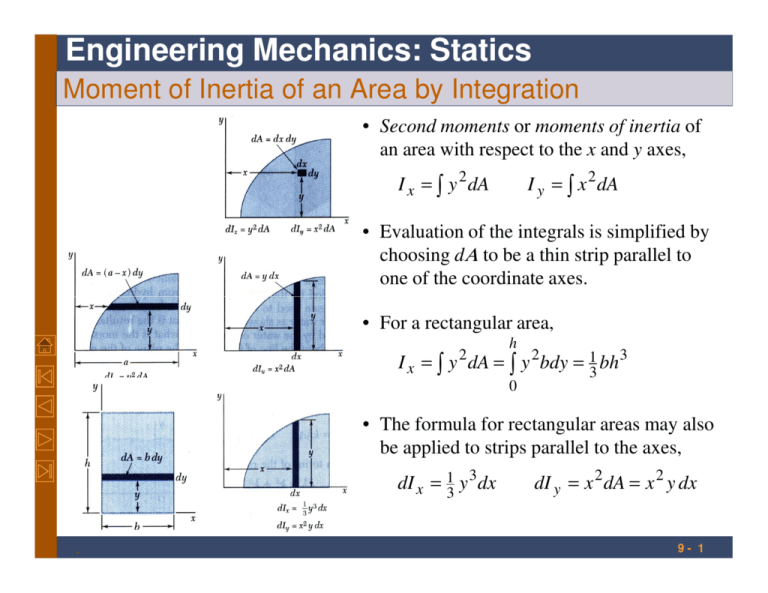
Engineering Mechanics: Statics Moment of Inertia of an Area by Integration • Second moments or moments of inertia of an area with respect to the x and y axes, I x = ∫ y 2 dA I y = ∫ x 2 dA • Evaluation of the integrals is simplified by choosing dΑ to be a thin strip parallel to one of the coordinate axes. • For a rectangular area, 2 h I x = ∫ y dA = ∫ y 2bdy = 13 bh 3 0 • The formula for rectangular areas may also be applied to strips parallel to the axes, dI x = 13 y 3 dx . dI y = x 2 dA = x 2 y dx 9- 1 Engineering Mechanics: Statics Polar Moment of Inertia • The polar moment of inertia is an important parameter in problems involving torsion of cylindrical shafts and rotations of slabs. J 0 = ∫ r 2 dA • The polar moment of inertia is related to the rectangular moments of inertia, ( ) J 0 = ∫ r 2 dA = ∫ x 2 + y 2 dA = ∫ x 2 dA + ∫ y 2 dA = Iy + Ix . 9- 2 Engineering Mechanics: Statics Radius of Gyration of an Area • Consider area A with moment of inertia Ix. Imagine that the area is concentrated in a thin strip parallel to the x axis with equivalent Ix. I I x = k x2 A kx = x A kx = radius of gyration with respect to the x axis • Similarly, Iy = k y2 A ky = J O = kO2 A kO = Iy A JO A kO2 = k x2 + k y2 . 9- 3 Engineering Mechanics: Statics Product of Inertia • Product of Inertia: I xy = ∫ xy dA • When the x axis, the y axis, or both are an axis of symmetry, the product of inertia is zero. • Parallel axis theorem for products of inertia: I xy = I xy + x yA . 9- 4






